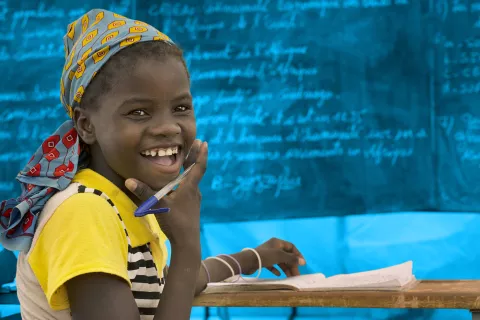For global development programs to be truly effective, they must reach all children, particularly those facing the most challenges. Yet, children with disabilities are too often left behind, their experiences and needs overlooked in evaluations. Recognizing this, UNICEF released a critical resource: "Disability-Inclusive Evaluations in UNICEF: Guideline for Achieving UNDIS Standards." This document underscores UNICEF's commitment to the rights of children with disabilities and provides a roadmap for making evaluations truly inclusive. This blog dives into these guidelines, offering practical guidance for evaluation experts seeking to build a more inclusive world for all children.
The Essence of Inclusion in Evaluation
Too often, children with disabilities are invisible in evaluations. True inclusion means ensuring that everyone, regardless of ability, has an equal opportunity to participate fully in society and benefit from development programs. UNICEF's guidelines emphasize the diversity among children with disabilities and the variety of barriers they face - from physical and social to cultural and legislative. Inclusive evaluations are essential to break those barriers.
Preparatory Phase: Laying the Inclusive Groundwork
The guidelines stress the importance of setting the stage for inclusive evaluations from the start. This includes ensuring terms of reference (ToR) explicitly address disability inclusion and that evaluation teams demonstrate expertise in this area. Crucially, the guidelines recommend actively involving persons with disabilities and their representative organizations from the outset.
Data Collection: Inclusively Gathering Insights
The success of disability-inclusive evaluations hinges on how data is collected. The guidelines advocate for methods that actively involve persons with disabilities throughout the process. Interview methods should be adapted to the needs of children with various disabilities, and visual tools may be necessary to facilitate participation.
Analysis and Reporting: Reflecting on Inclusion
The analysis and reporting phase is where the impact of inclusive evaluation practices becomes evident. Findings must be presented with specific attention to disability inclusion, ensuring the experiences of persons with disabilities inform recommendations. This phase also offers an opportunity to highlight any gaps in disability-disaggregated data, leading to further advocacy efforts.
Conclusions and Recommendations: Advocating for Change
Conclusions and recommendations of evaluations must reflect the commitment to disability inclusion. This means not only assessing whether a program worked but whether it worked for everyone. By highlighting successes and areas for improvement, evaluations directly contribute to advancing the rights and well-being of children with disabilities and shaping more inclusive programs.
In Conclusion
UNICEF's guidelines for disability-inclusive evaluations are a powerful tool in the journey towards a more inclusive world. By embedding inclusion into evaluation processes, UNICEF enhances its programs and reaffirms its commitment to upholding the rights of all children. For evaluation experts, these guidelines offer a roadmap for ensuring their work fosters a society where no child is left behind.





